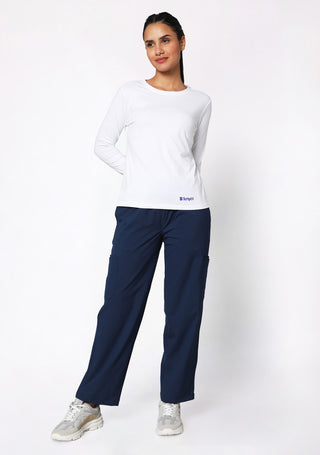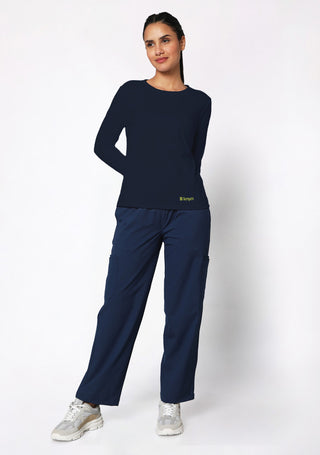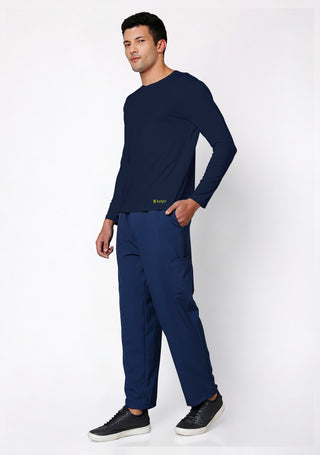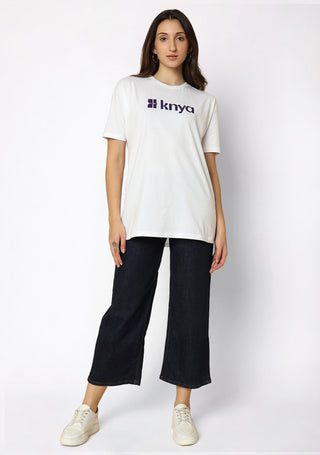Nurses are the unsung heroes of the healthcare system, working tirelessly to ensure patient care, safety, and comfort. Their uniforms, though often overlooked, play a critical role in their daily routines. At Knya, we understand that a nurse's uniform isn’t just about appearance—it's about functionality, professionalism, and identity. But what exactly is a nurse uniform called? Let’s explore the attire of our healthcare heroes in depth.
The Modern Nurse Uniform: Scrubs
Today, the most common answer to "What is a nurse uniform called?" is scrubs. These are the go-to uniforms for nurses and many other healthcare professionals. They typically consist of a top and matching pants, made of lightweight and breathable fabrics like cotton, polyester, or blends.
Key Features of Scrubs:
- Comfortable Fit: Designed for long shifts and constant movement.
- Durability: Built to withstand frequent washes and exposure to fluids.
- Pockets: Multiple compartments to hold essential tools.
- Easy to Clean: Most scrubs are stain-resistant and quick-drying.
Scrubs come in various colors and styles, allowing hospitals to color-code staff or let individuals express personal style while maintaining professionalism.
The Evolution of Nurse Uniforms
Nurse uniforms have undergone a remarkable transformation over the decades. Originally, nurses wore starched white dresses, aprons, and the iconic nurse cap—symbols of order, purity, and discipline.
Traditional Nurse Uniform:
- White tunics or dresses
- Aprons
- White stockings and shoes
- Nurse caps indicating training level
However, as the role of nurses expanded and modernized, so did their uniforms. The switch to scrubs reflects a focus on hygiene, practicality, and mobility.
Click here to Explore All Women's Scrubs and discover our complete collection of comfortable and stylish medical apparel
Beyond Scrubs: Other Elements of Nurse Attire
While scrubs are the core of a nurse’s uniform, they are often accompanied by:
Underscrubs
Layering is essential, especially in fluctuating hospital temperatures. Underscrubs provide warmth, comfort, and help wick moisture away from the skin.
Surgical Caps
Used during procedures or in sterile environments, surgical caps help maintain hygiene by keeping hair contained and reducing contamination risks.
Lab Coats and Doctor White Coats
Although more common among physicians, many nurses, especially nurse practitioners or those in administrative roles, also wear lab coats or doctor white coats over their scrubs for added professionalism and protection.
Why Scrubs Matter: The Functional Role of Nurse Uniforms?
Nurse uniforms are far more than clothing. They:
- Ensure Hygiene: Scrubs are easy to sanitize and replace.
- Improve Safety: Some scrubs are made with antimicrobial fabric.
- Support Identity: Uniforms foster team spirit and patient trust.
- Offer Utility: Pockets, stretch panels, and ergonomic design aid performance.
Gender-Inclusive and Custom-Fit Scrubs
Modern nurse uniforms have become more inclusive. Whether it’s scrubs for men, scrubs for women, or gender-neutral designs, the focus is on comfort, fit, and confidence.
The Psychology of Colors in Nurse Uniforms
Colors in nurse uniforms serve both functional and psychological roles:
- Blue: Calming, trustworthy
- Green: Healing, refreshing
- Black/Navy: Professional, authoritative
- Pink or Pastels: Friendly, comforting
Hospitals often assign specific colors to departments, such as pediatrics or surgery, to help patients identify staff quickly.
Ready to explore our amazing scrubs collection? Browse the best here
Sustainable and Antimicrobial Scrubs
At Knya, we believe in merging fashion with function and responsibility. Many of our scrubs feature sustainable fabrics like recycled polyester or organic cotton. Additionally, antimicrobial properties help reduce the spread of infections—a key concern in clinical settings.
Personalized Nurse Uniforms: Adding Identity to Function
Customization is a rising trend. Whether it’s embroidered names, logos, or department labels, personalization enhances professional identity and team cohesion.
Dress Codes and Uniform Policies in Healthcare
Hospitals and clinics usually have strict uniform policies, which may include:
- Specific scrub colors by role
- Prohibited patterns or bright designs
- Clean, ironed clothing daily
- No open-toed shoes or excessive accessories
These policies promote safety, hygiene, and a consistent, professional image.
Accessories that Complement Nurse Uniforms
Essential accessories include:
- ID badges
- Comfortable, supportive shoes
- Compression socks
- Penlights
- Stethoscope clips or holders
These items enhance functionality while helping nurses stay prepared.
The Future of Nurse Uniforms
Technological innovation is shaping the next generation of uniforms:
- Smart fabrics: Detect body temp or stress levels
- Antiviral textiles: Added protection against infectious agents
- Moisture-wicking, odor-resistant materials: For maximum comfort
Knya stays ahead of the curve by incorporating many of these features into our collections.
Conclusion
The nurse uniform, once a symbol of traditional femininity and discipline, has evolved into a symbol of strength, professionalism, and innovation. Today, scrubs and associated attire like underscrubs, lab coats, and surgical caps reflect not just the changing times but also the diverse and demanding roles nurses play.
At Knya, we believe that what nurses wear should empower them—to move freely, feel confident, and perform at their best. Whether it's scrubs for men, scrubs for women, underscrubs, or doctor white coats, our commitment is to combine quality, comfort, and modern design to suit every healthcare hero's needs.















